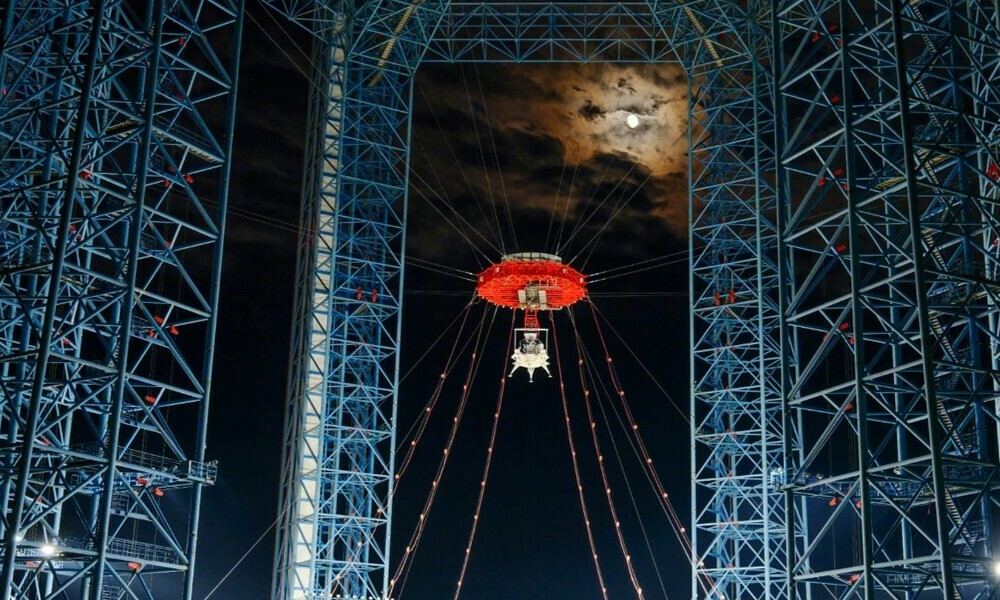August 6, 2025
HUAILAI, Hebei, China – China has successfully completed a comprehensive landing and takeoff test for its crewed lunar lander, a critical step toward its goal of putting astronauts on the moon by 2030. The test, conducted on Wednesday, August 6, 2025, at a specialized facility in Huailai County, Hebei Province, marked the first time China has verified these capabilities for a manned spacecraft in a simulated extraterrestrial environment. The China Manned Space Agency (CMSA) officially announced the success on Thursday, August 7, 2025.
The Lanyue Lander and its Role in the Mission
The lunar lander, officially named Lanyue (which translates to “embracing the moon”), is a newly developed spacecraft designed to transport two taikonauts from lunar orbit to the lunar surface and back. The spacecraft is a complex system composed of both a landing module and a propulsion module. After landing, the Lanyue will function as a temporary base, providing essential life support, power, and data capabilities for the taikonauts during their stay. It’s also designed to carry a lunar rover and other scientific payloads, enabling extensive surface exploration.
The Significance of the Test
The test in Huailai was far from a simple exercise. It was a rigorous verification of the lander’s key systems under simulated lunar conditions. The test site, the largest of its kind in Asia, replicated the moon’s gravity and terrain, including a surface with a special coating to mimic lunar soil reflectivity, as well as simulated rocks and craters. The test validated several critical functions, including:
- The descent and ascent schemes, ensuring the spacecraft can safely lower itself to the moon and then launch back into orbit.
- The control systems and engine shutdown procedures upon lunar touchdown, which are crucial for a soft landing.
- The compatibility between various subsystems, such as the guidance, navigation, and control (GNC) systems and the propulsion system.
According to Wang Xiaolei, a staff member at the China Academy of Space Technology, a primary focus of the design and testing process is the “unconditional safety of taikonauts.” This emphasis on redundancy and safety is evident in the design, with the lander equipped with multiple engines arranged in a redundant configuration to ensure a safe return even in the event of a single engine failure.
China’s Broader Lunar Exploration Strategy
The successful test is a key part of China’s comprehensive and long-term lunar exploration program. The overall plan involves two separate launches on the powerful new Long March 10 carrier rocket. One rocket will launch the Mengzhou manned spacecraft, and the other will launch the Lanyue lander. The two spacecraft will then rendezvous and dock in lunar orbit. After the crew transfers to the lander, they will descend to the lunar surface to conduct scientific exploration with the Tansuo lunar rover and other equipment. The taikonauts will also be equipped with a specialized spacesuit named Wangyu (“gazing into the cosmos”).
This mission will not only mark a major milestone for China but also contribute to its long-term plan of establishing a “basic model” for an International Lunar Research Station by 2035, a project that includes collaboration with Russia and the potential for a nuclear reactor on the moon’s surface.




